Here you can read some of the publications concerning Mosaico cement tiles:


Fliesen & Platten February 2013
Design Workshop: Recently I have heard on the radio a report, how to introduce young people to their dream home. Most spoke of an old house that they wanted to decorate new It is such a dream house this article is about: built in the early nineteenth century, it is waitingas a small town house on the awakening to the present day. A balancing act between old and new. www.fliesenundplatten.de

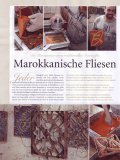


Domicil – Summer 2010
Khalil Baroussi knows his stuff. ‘Malem’ is what they call him in Morocco, which means ‘master’, but it’s more than just a title. Three times to the right, three times to the left. He shakes the metal mould in which the tile takes shape, and whose chambers he has filled with red and yellow cement pastes respectively. His rapid movements are designed to ensure the even colouring of the paste.




Selber machen – August 2005
On holiday we swoon over the colourful tiled floors, and back home, we’re met by dreary off-white… Lush red hues, a warm yellow, or a colourful mosaic, always with a patina and the wear and tear associated with many decades of being constantly walked over: that’s how we remember the tiled terracotta, cement and (ancient) marble floors in the holiday countries around the Mediterranean.



Wohnen und Garten – January 2010
Like a magic carpet the Oriental-looking floor in the picture above takes us on a journey to the East. The beautiful round ornaments on these cement tiles are artistically framed by their border (Mosaico).



Schöner Wohnen – May 2005
Cement tiles with that certain something – whether inspired by Mediterranean tradition, influenced by Art Nouveau or, using bold colour combinations, looking quite new and different: the tiles, cast using a template technique, are experiencing a renaissance. The supplier, Mosaico, has them tailor-made to the customer’s wishes: any colour combination is possible.


Lisa Wohnen – August 2007
Hand-cast cement tiles are the ideal match for the noble Finca style! The pristine down-to-earth atmosphere is the reason why we feel so much at home on the Mediterranean. Cement tiles, today hand made just as they were more than a hundred years ago, are designed and made individually for every customer.



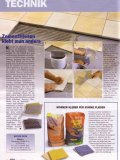
Selber machen – May 2005
Say tile, and you generally think of the classic stoneware tiles, fired from clay, which be found covering millions of square metres of wall and floor space in German kitchens, bathrooms and entrance halls. By contrast, not many people know that tiles for walls and floors can also be made of cement – even though cement tiles have a number of advantages over their ceramic counterparts.


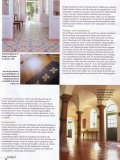

Landlust – July/August 2007
The nicely patterned ornamental tiles in our grandparents’ house, or the old tiles with the natural-looking colours in a friend’s kitchen. Many people talk about these memories when they look for a cement-tile floor. For almost a century they had fallen into oblivion. But for a few years they’ve been available once more!

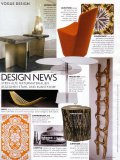
Vogue – May 2005
Kaleidoscope – handmade cement tiles (20 x 20 cm), which can be laid to form different patterns. There are 36 basic colours in 300 motifs from every era and style. Individual designs are catered for.

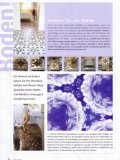
Möbel – 2006
More than a hundred years ago they brought a soft silky sheen and luminous colours to the architecture of the newly emerging German Empire. Now the cement tiles are back, and conquering the modern world. ‘They are all custom-made one-offs,’ says Wolfgang Pisar of Mosaico Tiles in Cologne.
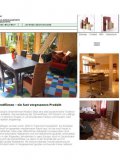
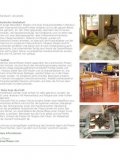
Lafarge-Zement – November/Dezember 2005
The German company Mosaico is reviving an old construction technique: the manufacture of cement tiles. Using cement from Lafarge, tiles are produced in Morocco in a wide variety of patterns and colours following an old tradition.
Cement tiles were already being manufactured in France in 1850. They quickly spread to the whole Mediterranean region, where they can still be admired in manor houses and public buildings.


Das Haus Spezial – Renovieren -2/2005
Attention; nous cherchons encore le PDF actualisé, 31.07.2012

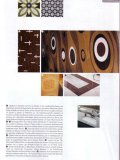
Trendmagazin Küche & Bad – 2005/2006
Marble-bound cement tiles have been used since the late 19th century, especially in sothern Europe. ‘Mosaico’ tiles are all individually hand made in the old craft tradition. The motifs and colours can be adapted to any design concept.

Gastro-News – March 2005
Tiles with your own logo or an individual pattern – have you considered that? An inexpensive possibility of making this wish come true is offered by the Mosaico company.


Deutsches Architektenblatt – November 2005
They could be seen in practically every Art Nouveau or late-19th-century Revivalist building. We’re talking about marble–bound cement tiles, an historic building material, but one which has fallen into oblivion. But now Mosaico is seeking to revive it in the spirit of the age. At no extra charge, Mosaico produces tiles in any colour combination you care to mention.


Zu Hause Wohnen – February 2005
Cement tiles have a long tradition all round the Mediterranean. During the Art Nouveau period they were popular in Germany too. This old craft is now being taken up by a company that makes cement tiles in Morocco, with modern, Spanish and Arab motifs.


Lisa Wohnen – November 2005
A sparkling presence – Cement tiles produced according to an ancient tradition as new eye-catchers. They have a magic all of their own, which rubs off on to the rooms …


Deco-home – November/December 2005
The hand-cast ‘Mosaico’ marble cement tiles lend rooms the charm of Sheherazade’s chambers, in 36 hues, 20x20cm.
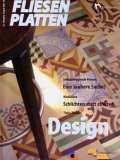



Fliesen und Platten – August 2005
At a time of stiffer competition in the tile business, special importance must be attached to inimitable products. Cement tiles, individually made according to an old craft tradition, differ not only visually from other flooring and wall coverings, but also require above–average craft skills, and care when laying. Wolfgang Pisar and Daniel Bailo have set out to revive this historic building material.



Der Holznagel – September/October 2005
Cement tiles are an historic building material for the design of floors and walls. They are currently enjoying a renaissance, and quite rightly so! The German architects of the late 19th century and the Art Nouveau period certainly appreciated the special charisma of cement tiles.




Living & More – July/August 2005
Traditionally used in the Mediterranean countries, marble-bound cement tiles are on the up in Germany too. Compared with ceramic tiles, they feel softer and smoother. The colours come across as velvety, especially the pastel tones. Cement tiles are suitable for both walls and floors, which, together with the huge range of designs, allows great scope for design: ‘Mosaico’ offers a choice of 300 patterns and 36 colours, which can be individually combined to the customer’s taste.